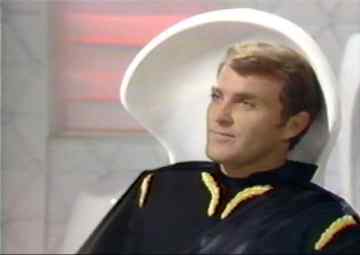
|
An expert on predicting the behaviour of an individual in given
circumstances, assuming sufficient data was available. Carnell described
himself as an "official" psychostrategist, suggesting that the Federation (or
perhaps some other organisation) employed him especially for
psychostrategical work. He also mentioned exacting a fee, which might
indicate that he was working privately for Servalan or that Space Command had
to buy his services from elsewhere in the Federation: the former seems more
likely. The accuracy of a prediction depended on the psychostrategist having
all the pertinent information: in Carnell's case, he was not told until too
late of Rashel being with Coser, invalidating his predictions.
|  |
| Visited by Tel Varon when collecting evidence for Blake having been mistried. It is not stated whether this computer held records for the dome city alone, all of Earth's population or even some wider area, but the first seems most likely. Varon had to use his Justice Department credentials in order to get access to information, suggesting that general public access was not permitted. Three command codes were used by the duty officer (spoken to the control console): Alpha 3375 accessed medical records, Alpha 3377 school attendance records, and Alpha 00288-alpha Central Clinic admissions on a particular date. This last was classified and unavailable to Varon's Priority 3 clearance. | 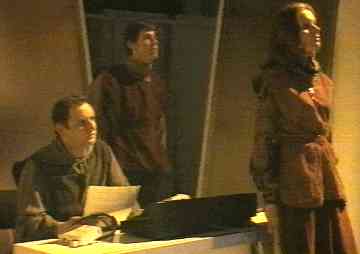 |
Means of scrambling messages. The pulse code could only be broken with the TP-crystal fitted in an A-line converter.
Originally the officer on board a ship who kept the accounts, and who usually had charge of the provisions. Later, on board passenger ships, the purser had the general responsibility for the passengers and their welfare.
|
Keiller, as Purser of the Space Princess in Gold, appeared to carry out
this responsibility. He gave the passengers their day's itinerary,
described the sights they could see, and promised that he, the captain, and
the crew would 'endeavour to ensure' that the passengers would 'gain
maximum enjoyment and instruction' from the voyage. All this was, however,
done via recordings, his actual job being that of head of security,
responsible for the safe delivery of the gold on board.
| 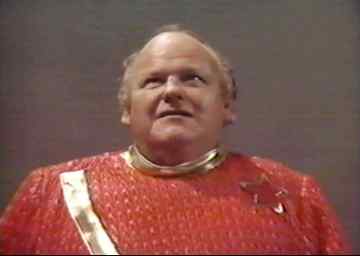 |
|
The type of Space Command vessel most often
encountered by Blake and Avon. Pursuit ships were first mentioned in
Cygnus Alpha when Zen reported a "fleet of ships" changing course
towards Liberator: it identified these vessels as pursuit ships. They
were additionally encountered as follows:
|
 Pursuit Ship (28K) |
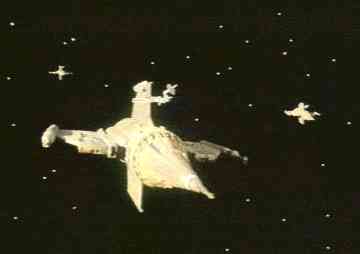 |
| Breakdown: three pursuit ships were summoned to XK-72 by Professor Kayn: they fired on Liberator, missed, and destroyed the space station. | 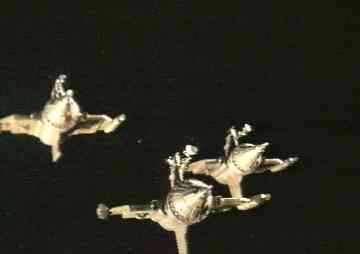 |
| Hostage: More than 20 pursuit ships attacked the Liberator in a carefully planned trap, registering more than 12 hits. Zen stated that their detector range was 900 spacials. The commander of the attack ordered an attack speed of Time Distort 10. Servalan travelled to Exbar in a pursuit ship, C-26, capable of TD-10 (though TD-9 was its safety maximum). | 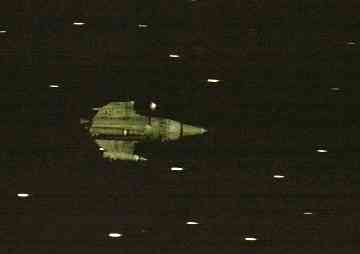 |
| The Harvest of Kairos: Jarvik's attacked Liberator with three Mark X pursuit ships, which Servalan said were the newest and fastest in her fleet. Zen noted a modified fin suggesting "primitive Time Distort facility". | 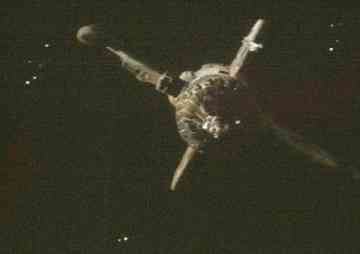 A Mark X Pursuit Ship |
In Redemption Zen referred to the second DSV launched by the System as a pursuit ship.
Invented by Forbus on an unspecified world, pylene-50 was intended to be used homeopathically as a muscle relaxant. When administered at 100 times normal dosage, it induced total docility and obedience (by blocking the production of adrenalin, according to Leitz). Leitz also observed that the work ethic was often reinforced by those "adapted" by it and that the effects of pylene-50 were immediate with no side-effects.
Commissioner Sleer used pylene-50 in her Pacification Programme on Helotrix and other worlds. On Helotrix at least it was injected by chemical laser, but by Warlord it was being pumped into air and water supplies. The enzyme bonds in the drug broke up within a few days of production and so it had to be manufactured where it was needed. The secret of manufacture appeared to be held by Forbus, forced to work for Sleer, but his death did not hinder the Pacification Programme or use of the drug, at least in the long term. Forbus also developed an antidote, which could not cure those already "adapted" by pylene-50, but could offer immunity to those who later came into contact with it. Avon needed Zukan to produce this antidote from a plant ostensibly growing in abundance on Betafarl.
Forbus" description of his condition to Dayna and Tarrant, referring to Sleer's use of tincture of pyrhennic to ensure his obedience to her. The effects were kept at bay by a drug Forbus had to take regularly: Sleer threatened to cut off his supply for three days, explaining "that means you'll die another ten per cent".
|
The name the inhabitants of Obsidian called themselves. First Citizen Hower,
was not native to the planet and it is a matter of conjecture as to how many
Pyroans were born there. Taught "peace from the cradle", their aggressive
urges were curbed by tiny electric shocks and daily psychological propaganda.
The result, said Hower, was "no wars, no lawlessness, no crime... our people
devote themselves to creation and not destruction". They were all wiped out
when Hower detonated the nuclear device in the volcano rather than see his
planet annexed by the Federation. This was in accordance with their Vow, to
destroy themselves rather than be colonised. They were all dying anyway,
through fallout from the nuclear device.
| 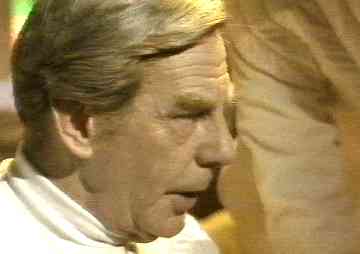 |
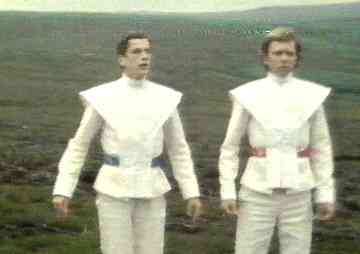 Milus and Natin | One Pyroan who did not conform to the general ideal was Bershar, Hower's son, and he was executed with a lethal dose of anaesthetic for his nonconformity. Other Pyroans mentioned by name were Milus and Natin. No female Pyroans were named, although some were seen. |
| Supposedly passed by the Space Princess on its journey from Zerok to Earth. Keiller's recorded commentary described it as "the twelfth wonder of the..." (of the galaxy, presumably). Described only as a "ferocious power", with no indication as to whether it was a planet or a star, but the latter seems more likely. | 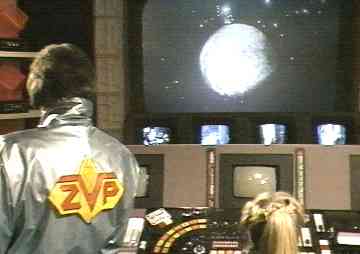 |